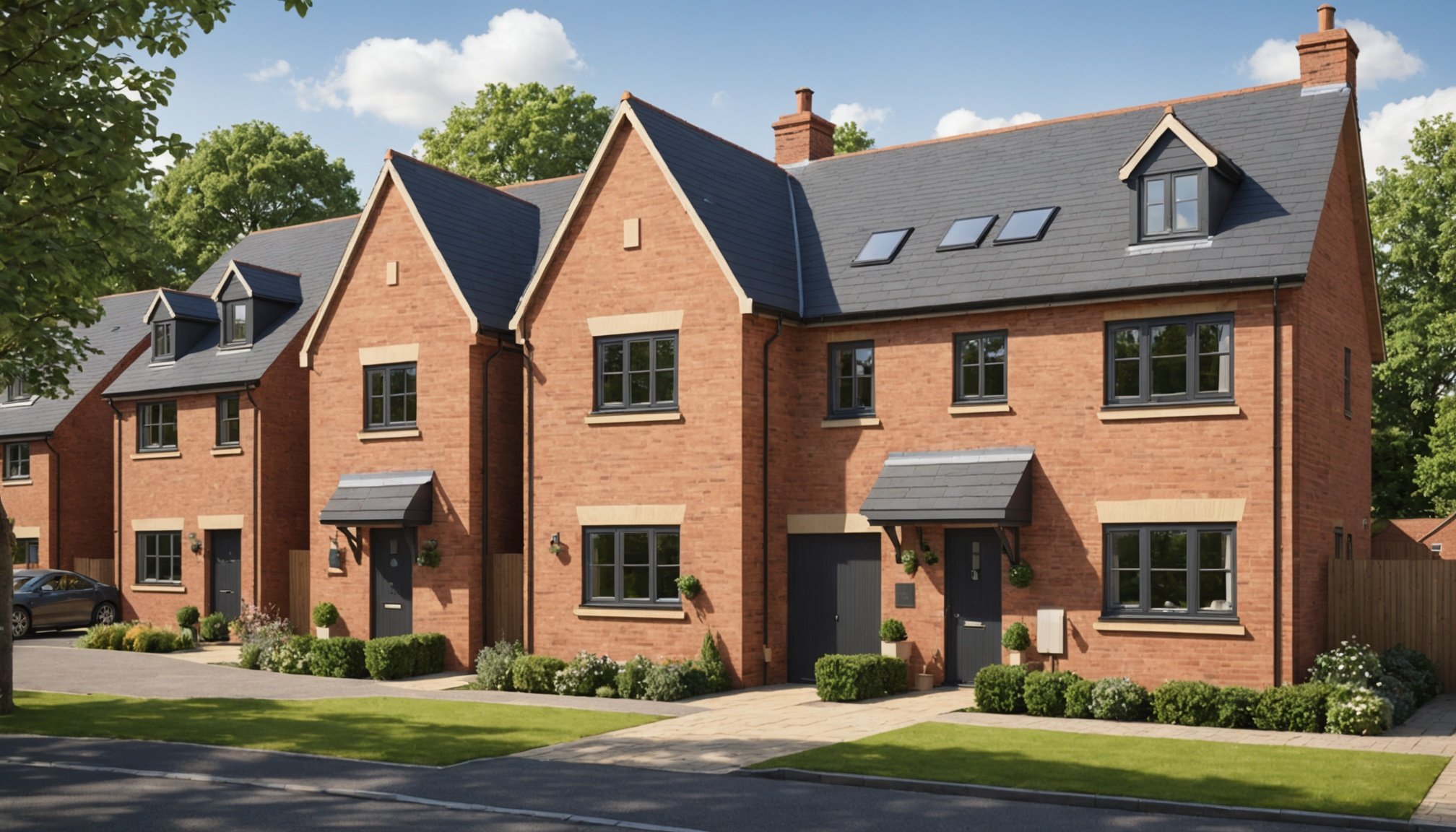Navigating the real estate market can often feel like a maze of choices, where every decision has potential investment implications. As of December 2024, modern buyers are faced with a particularly pressing choice: should you invest in new build properties or opt for older homes? This article delves into the advantages of both, providing an in-depth exploration of what each option offers in terms of costs, maintenance, and future market value.
The Appeal of New Build Properties
When you think of new build properties, images of pristine construction, state-of-the-art facilities, and energy-efficient designs often come to mind. Investing in a new build home presents several unique benefits that are hard to overlook.
Topic to read : How can energy efficiency improvements affect your property’s marketability?
First and foremost, new builds are crafted with the latest building technologies, which often translate into improved energy efficiency. As environmental consciousness rises, many developers are prioritizing the integration of modern systems and materials that reduce the carbon footprint of homes. This energy efficiency not only benefits the environment but also results in lower utility bills, making it a cost-effective choice for the long term.
Moreover, new build properties often come with warranties that cover structural defects and other potential maintenance issues for a number of years. This reduces the costs and worries associated with unexpected repairs, a common risk with older homes. Additionally, specific modern amenities, such as open-plan layouts, smart home integration, and eco-friendly fixtures, are becoming standard, adding both functionality and property value.
In the same genre : How can you leverage equity in your home to finance further property investments?
While new homes offer these benefits, it’s also significant to consider the market dynamics. As of 2024, real estate investors have observed that new builds in growing areas often appreciate faster due to increased demand for modern living spaces, making them an attractive investment opportunity.
The Timeless Charm of Older Homes
In contrast to new builds, older homes possess a charm and character that cannot be easily replicated. From vintage architectural styles to established neighborhoods, these properties offer a sense of history and enduring appeal.
One of the most compelling reasons to invest in an existing home is the potential for cost savings. Generally, older homes have lower purchase prices compared to their newer counterparts, providing a more attainable entry point into the real estate market. Additionally, many of these homes are situated in well-established neighborhoods where property values have been stable or steadily increasing over time.
Older homes frequently boast larger plots and more traditional building materials, offering a durability that has withstood the test of time. For those who appreciate craftsmanship, the intricate details of vintage properties, such as original woodwork and bespoke fixtures, add a unique value that modern homes may lack.
Of course, investing in older homes often demands a greater commitment to maintenance. However, the opportunity for renovation and customization allows you to tailor the property to your tastes, potentially increasing its market value and ensuring it fits your lifestyle perfectly.
Cost Considerations: New Builds vs. Older Homes
As you weigh the decision between new builds and older homes, cost considerations will undoubtedly play a crucial role in your deliberations.
New build properties often come with a higher initial price tag, reflecting the costs associated with modern construction techniques and materials. However, these higher upfront costs can be offset by lower maintenance expenses and reduced utility bills, thanks to energy-efficient features. Additionally, many new builds come without the need for immediate renovations or updates, further reducing initial financial outlays.
Conversely, older homes, while generally more affordable initially, may incur costs related to updates, repairs, and renovations. These properties can come with hidden maintenance issues or outdated systems that require replacements or upgrades. However, such investments can result in increased property value and personalized living spaces.
When considering the long-term investment potential, it’s vital to factor in the likely appreciation rates. With a growing demand for modern, energy-efficient living, new builds often experience faster appreciation, making them an appealing option for those looking to maximize their returns. On the other hand, older homes in well-established neighborhoods also offer robust investment potential, particularly if they are upgraded to meet current market standards.
Market Trends and Future Outlook
As of late 2024, the real estate landscape continues to evolve, influenced by economic fluctuations, changing lifestyle preferences, and technological advancements. Understanding these market trends is essential when deciding between new build properties and older homes.
Recent years have seen a surge in demand for energy-efficient, smart homes, reflecting a broader societal shift towards sustainability. As a result, many buyers are drawn to new builds that incorporate these features, driving up their desirability and potential investment returns. This trend is particularly pronounced in urban areas where modern living spaces are becoming the norm.
However, older homes remain a staple in the property market, particularly among those who value character and history. As remote work becomes more prevalent, there is a renewed interest in suburban and rural properties that offer more space and a quieter lifestyle, often found in older homes.
Looking forward, it is anticipated that both new and existing homes will continue to hold their value for different reasons. New builds will attract eco-conscious buyers, while older homes will appeal to those who appreciate architectural heritage. As buyers, your decision should align with your long-term lifestyle goals and investment strategy.
Deciding between investing in new build properties or older homes involves weighing a variety of factors, each with its own set of benefits and challenges. New builds offer modern amenities, energy efficiency, and potentially faster appreciation, while older homes provide a unique charm, potential value enhancements through renovations, and generally lower upfront costs.
Ultimately, the choice will depend on your personal preferences, financial situation, and long-term investment goals. Whether seeking the cutting-edge features of a newly constructed house or the timeless appeal of an established home, both options offer valuable opportunities in today’s dynamic real estate market.











